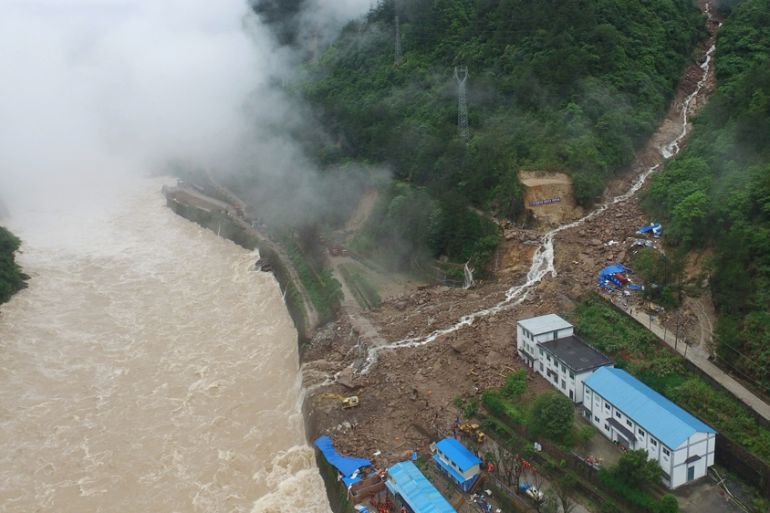Flooding triggers deadly landslides in southern China
Days of heavy rain, blamed on El Nino, bring disruption and devastation to several major cities.

Late spring rains are a feature of the climate across southern China, but this year the rain has been earlier and heavier than usual.
Once again, this departure from the norm is being blamed on the – now weakening – El Nino.
Keep reading
list of 4 itemsAfter the Hurricane
World’s coral reefs face global bleaching crisis
Why is Germany maintaining economic ties with China?
Torrential rain began on Sunday and the province of Fujian was particularly badly affected. More than 190mm of rain fell in parts of the province.
A landslide on the construction site of a hydro-electric power station is known to have killed at least 33 people and several more are still missing.
|
|
Shenzhen in Guangdong province has been badly affected by floods. The city is home to seven million people and it links Hong Kong to the mainland. On Sunday, 430mm of rain fell – the heaviest rain the city has seen in at least six years. Damage caused by the flooding is estimated at $12m.
The rain continued on Tuesday, with Guangzhou, also in Guangdong province, receiving a citywide average of 47mm, although the Panyu district recorded 165mm in less than 24 hours. Drivers were trapped in their vehicles as floodwaters rose to a depth of 0.8 metres.
There are concerns that the flooding will follow a similar pattern to that which occurred during the last major El Nino, in 1997-98. Then, torrential rain and flooding, which began in June and lasted for more than two months, resulted in the deaths of more than 3,000 people, and affected 220 million across 24 provinces.
Currently, river levels in many southern rivers are at record levels for this time of year. Many sections of the Yangtze River, Asia’s longest river, are between 3.3 and 4.1 metres higher than normal – even higher than at the same time in 1998.
Over the next few days improving weather conditions should allow the flooding to subside; but only time will tell whether the region is in for more of the same in the coming weeks.